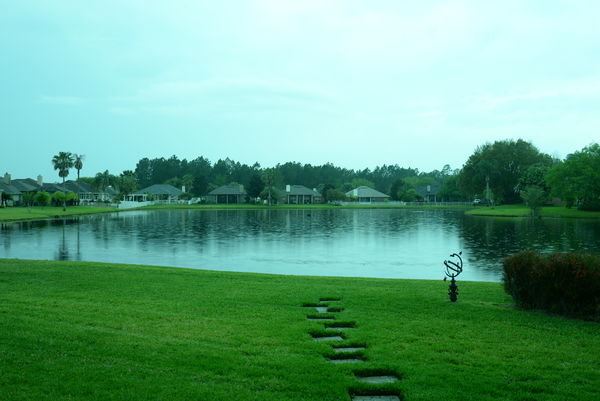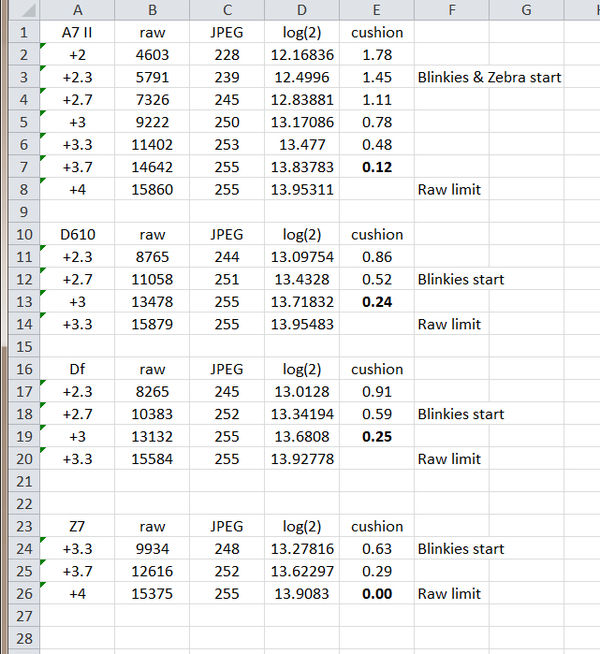ETTR does not mean you need to increase the exposure
Mar 30, 2021 11:15:05 #
In fact, you often need to decrease it if your camera's meter recommends an exposure that is too high.
Under many circumstances you may not need to change the exposure at all.
In the next post I will show an example of an image based on matrix metering and exposed at the camera's recommended settings. The day was overcast and the rain was very light. ISO was set to 400, aperture to f/5.6 and the camera recommended a shutter speed of 1/320s. The JPEG histograms were already at the right edge because the sky was relatively bright.
When I increased the exposure by 1/3 stop (1/250s) the highlights blew out in the JPEG and the sky was covered with solid blinkies. When I checked the raw file with RawDigger I could see why.
Under many circumstances you may not need to change the exposure at all.
In the next post I will show an example of an image based on matrix metering and exposed at the camera's recommended settings. The day was overcast and the rain was very light. ISO was set to 400, aperture to f/5.6 and the camera recommended a shutter speed of 1/320s. The JPEG histograms were already at the right edge because the sky was relatively bright.
When I increased the exposure by 1/3 stop (1/250s) the highlights blew out in the JPEG and the sky was covered with solid blinkies. When I checked the raw file with RawDigger I could see why.
Mar 30, 2021 11:21:02 #
Here is the JPEG SOOC and the B&W version created from the raw file.
SOOC with the camera's White Balance set to Cloudy
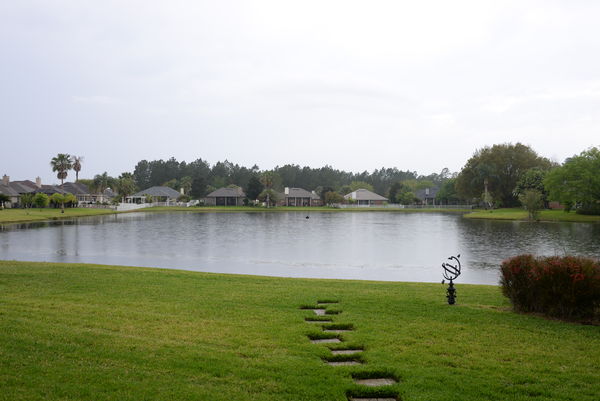
(Download)
Developed from the raw file
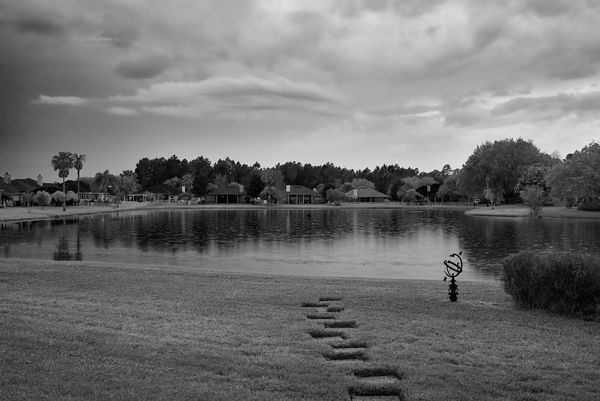
(Download)
The raw histograms show that there was no room to add exposure
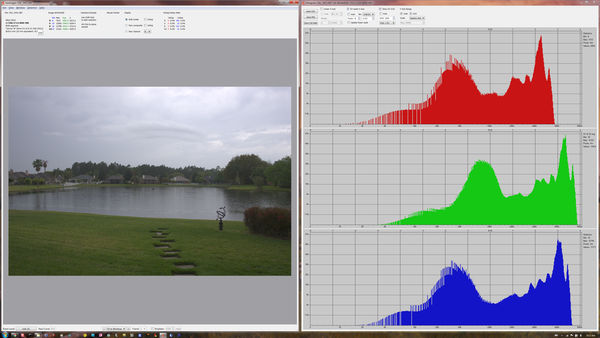
(Download)
Mar 30, 2021 11:23:32 #
Just for grins, I set the camera to UniWB and got the same recommended exposure and the same raw file.
But this image makes it look like the development of the B&W version was more spectacular.
But this image makes it look like the development of the B&W version was more spectacular.
Mar 30, 2021 11:33:40 #
Mar 30, 2021 11:34:47 #
OK, that shows that the camera's metering can push the jpg to its limits. But ETTR is about pushing the raw file to its limits (not the same thing).
Mar 30, 2021 12:25:58 #
R.G. wrote:
OK, that shows that the camera's metering can push the jpg to its limits. But ETTR is about pushing the raw file to its limits (not the same thing).
It is the same thing in this example.
In fact, the JPEG limits are not actually far from the raw limits. With all of the cameras I have tested, once the JPEG limits are as bright as you can make them and pushed to the right there is less than a full stop remaining before the raw file also reaches its limit.
The raw histograms tell us that this scene has a fairly wide dynamic range (DR), about eight stops. In broad daylight with really white clouds it is about the same, seven or eight stops.
It's possible to find a landscape scene with a wider DR where the exposure might need to be reduced, just not today. A typical scene with a wider DR might be a back-lit or midday where there are deep shadows and bright sunlit areas.
But it's also pretty common to find a scene with a narrower DR, especially if you don't make clouds a significant part of the image. When that happens matrix metering will still recommend a reasonable exposure. It just might not be pushed to the right like this one.
Mar 30, 2021 12:44:38 #
selmslie wrote:
.....It's possible to find a landscape scene with a wider DR where the exposure might need to be reduced, just not today.....
Indeed. In fact if you were using matrix metering and you had less sky in the frame the camera would have upped the exposure because it would be metering for the predominance of darker landscape.
I'm left wondering why professional cameras don't have a histogram that reflects the limitations of the raw file. I'm sure most professionals would know how to safely make use of such a feature. It could still produce jpegs within the same limits but the histogram would be extended to include the range offered by the raw file. It would be up to the photographer to choose whether he wanted to use that extra range or not.
Mar 30, 2021 12:53:53 #
R.G. wrote:
Indeed. In fact if you were using matrix metering and you had less sky in the frame the camera would have upped the exposure because it would be metering for the predominance of darker landscape.
And the clouds would have been overexposed in this case unless you reduced the exposure.
R.G. wrote:
I'm left wondering why professional cameras don't have a histogram that reflects the limitations of the raw file. I'm sure most professionals would know how to safely make use of such a feature. It could still produce jpegs within the same limits but the histogram would be extended to include the range offered by the raw file. It would be up to the photographer to choose whether he wanted to use that extra range or not.
You can get Magic Lantern for some Canons to display the raw histograms.
But you cal also learn to use the blinkies with any camera.
And Nikon now has highlight weighted metering in some cameras which will lower the exposure if necessary.
Mar 30, 2021 14:35:14 #
selmslie wrote:
Here is the JPEG SOOC and the B&W version created from the raw file.
That scene begs for the use of a graduated neutral density filter. The need for post processing should be minimal.
Mar 30, 2021 14:57:47 #
a6k
Loc: Detroit & Sanibel
R.G. wrote:
OK, that shows that the camera's metering can push the jpg to its limits. But ETTR is about pushing the raw file to its limits (not the same thing).
You are correct that it's not the same thing. But Scotty is correct that the top of the curve is almost at the same point. There are two distinct differences that I have seen with Nikon, Canon and Sony images.
1. The raw "curve" is much closer to linear. In other words, it approximates a straight line near the top especially. the JPG curve comes near the limit sooner and then flattens out (more toward horizontal). The JPG curve is an actual curve and makes images seem brighter, etc. That difference means that moving right to left, starting at saturated, the difference between saturated and unsaturated is greater, sooner with raw vs. JPG. But actual blown values in the two formats are very close, I would estimate 1/3 stop or less.
2. The camera exposes raw files differently and actually sets the middle gray point lower (lower RawDigger value) than for the JPG. This is so uniformly true that it can only be by design. It gives the impression of more latitude but the reality is that it simply starts lower to end at about the same place.
I am being clumsy by saying that the camera exposes them differently. Since the raw comes first and the JPG is an interpretation of the raw (one of many possible) it is the camera's programming that creates this difference from the same exposure.
I base these observations on careful examination of sample files from "Imaging Resource" which were provided in both raw and JPG versions, same exposure, same time and so on. I used various tools to examine them including RawDigger, FastRawViewer, DarkTable and Mac's Preview/Digital Color Meter.
These are simply facts which are available to everyone but very few have examined them this way and thus very few have understood them this way.
FYIO
Mar 30, 2021 16:09:36 #
Winslowe wrote:
That scene begs for the use of a graduated neutral density filter. The need for post processing should be minimal.
That's not going to do the trick because the edge between the sky and the treeline is jagged. A graduated filter would also not evenly affect the sky.
If I were shooting film I might use a graduated filter. But there is a better way to go about it now.
The process is easy with a luminance mask that allows us to modify the sky separately from the rest of the image.
Mar 30, 2021 16:20:54 #
selmslie wrote:
... It's possible to find a landscape scene with a wider DR where the exposure might need to be reduced, just not today. A typical scene with a wider DR might be a back-lit or midday where there are deep shadows and bright sunlit areas. ....
I spoke too soon.
The first image was made at about 9:30 AM. By around 4 PM the lighting changed and I had a scene with a wider DR, over 9 stops.
There were still some tiny blinkies in the sky of the JPEG and the histograms were all the way to the right.
Even at ISO 400 the shadows were easy to recover. RawDigger reports that as much as 10% of the shadows are "UnExp". But that does not mean that their raw value is 0. It means that their values are below a level of about 64 (2^6). That still leaves about eight stops of DR above that level that are not "Unxp".
So ETTR can require reducing the exposure.
The JPEG SOOC needed to be underexposed by a full stop to keep the sky from blowing out
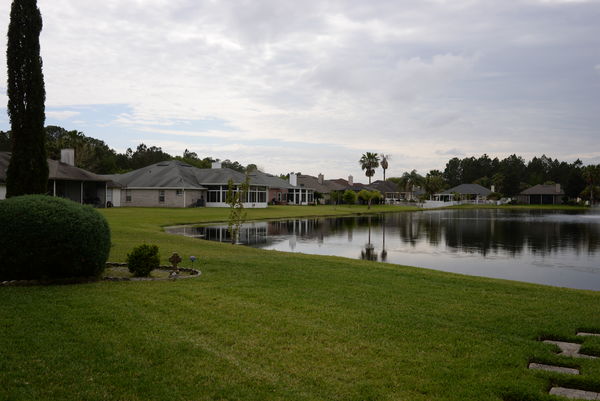
(Download)
The raw data provided the raw material for a B&W image developed in the same manner as the first example
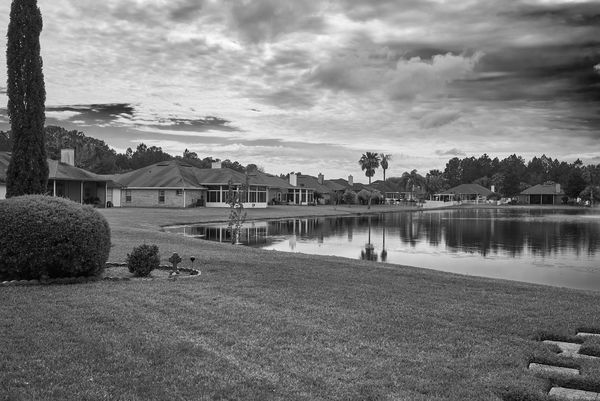
(Download)
The raw histogram confirms the scene's DR is well over 9 stops
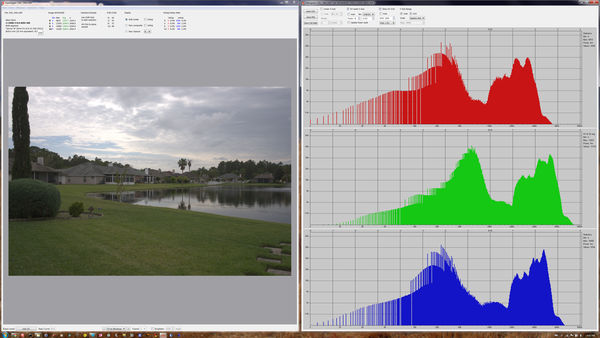
(Download)
Mar 30, 2021 16:52:44 #
a6k wrote:
....it is the camera's programming that creates this difference from the same exposure....
It sounds like you're describing different gamma values. If I understand correctly, the jpeg gamma curve sacrifices definition and headroom at the bright end for the sake of more contrast at middle and lower brightness levels (because that's closer to how we see). (I may be wrong. Gamma isn't something I've looked into). I suppose that's why when you see a jpeg-oriented histogram it doesn't show you where the raw file is topping out. But I got the impression that there was more of a difference between the two as far as the upper limit is concerned. ERADR is frequently reported as being more than one stop.
Mar 30, 2021 17:44:17 #
R.G. wrote:
It sounds like you're describing different gamma values. If I understand correctly, the jpeg gamma curve sacrifices definition and headroom at the bright end for the sake of more contrast at middle and lower brightness levels (because that's closer to how we see). (I may be wrong. Gamma isn't something I've looked into). ....
The upper limit for a JPEG is 255. The upper limit for a 14-bit raw file depends on the camera (it's not 16383).
I have measured the relationship between JPEG limits and the raw limits for four cameras. Here is what I found.
The table below shows how close the raw file is to blowing out the green channel when the JPEG reaches 255. All of the measurements were taken at 1/3 stop increments.
The "cushion" shows how many stops are left in the raw file when the JPEG reaches 255 for the four cameras I tested.
The bold numbers show that the A7II is about 1/8 stop from the raw limit, The Df and D610 are about 1/4 stop and the Z7 JPEG value reaches the limit at the same time the raw limit is reached. I am sure that, even if the numbers ,may be slightly different for other models, they will be very close to what I have found.
If you have blown the JPEG highlights you are very likely to have blown the raw highlights as well.
Nothing in these numbers suggest that the gamma for the JPEG is different throughout its range.
What you are perceiving as an apparent difference in gamma is not in the JPEG. It's in your display or your printed image. That's where the highlights and shadows are getting compressed to make the image appear more natural - higher contrast in the midtones.
Mar 31, 2021 05:17:15 #
It seems like the whole concept of ERADR (extra raw-available dynamic range) is becoming less and less relevant. Perhaps modern sensor manufacturing techniques are producing more in the way of consistency, allowing cameras to be designed with tighter margins.
If you want to reply, then register here. Registration is free and your account is created instantly, so you can post right away.

